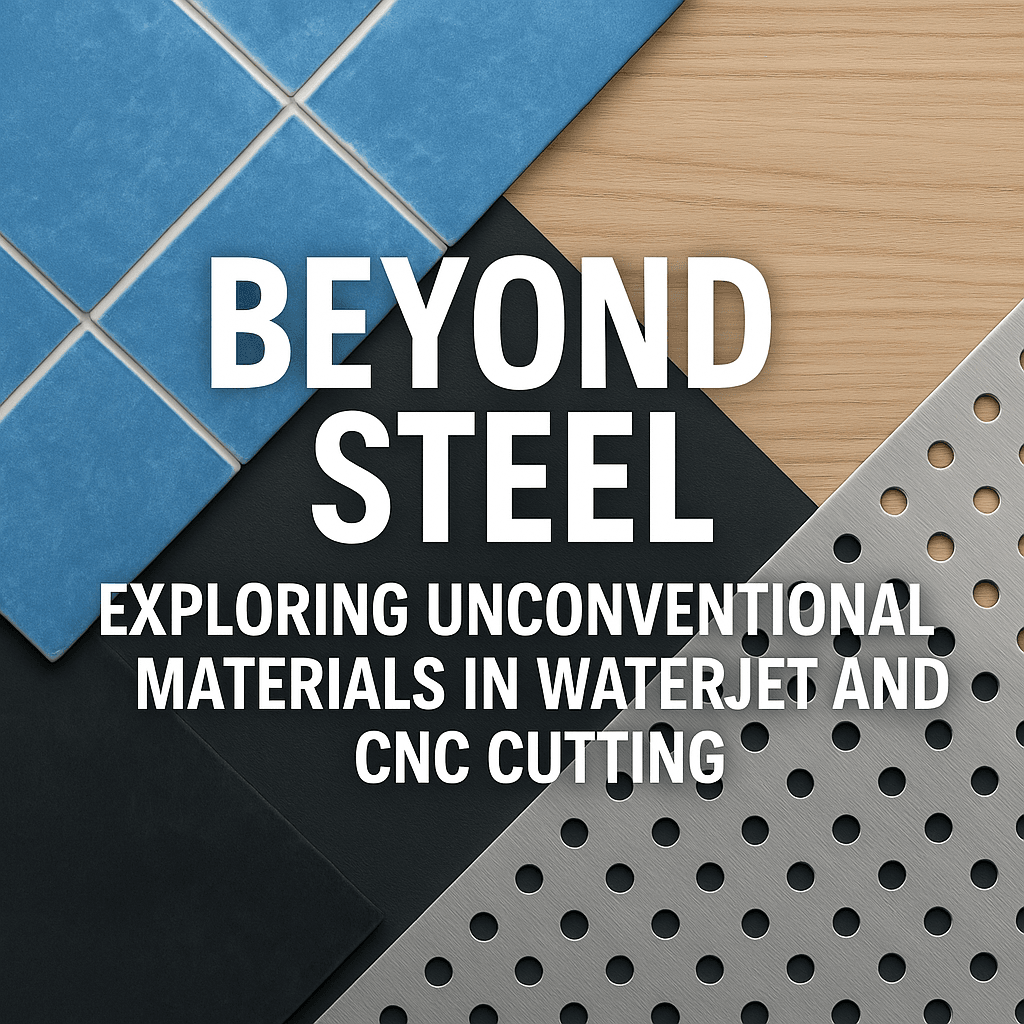
Beyond Steel: Exploring Unconventional Materials in Waterjet and CNC Cutting
Introduction
While steel continues to be the cornerstone of industrial manufacturing, fabricators are increasingly tasked with processing more exotic and unconventional materials. From brittle ceramics to flexible polymers, the ability to work with these diverse materials not only expands a shop’s capabilities but also opens new markets. At Jekran, our advanced cutting solutions are designed to meet these evolving demands. To learn more about our complete range of precision systems, visit our Machine Solutions page.
The Power of Waterjet Cutting
Waterjet cutting is widely recognized for its exceptional versatility. Unlike conventional cutting methods, waterjet technology uses a high-pressure stream of water—with or without abrasives—to cut through materials without introducing thermal stress. This makes it ideal for materials that are sensitive to heat, such as:
- Ceramic tiles and glass: Cut cleanly without cracking or chipping.
- Rubber and foam: Processed without causing deformation.
- Composite materials: Manufactured without delamination, preserving the intricate layered structure.
For an in‑depth description of the waterjet process and its physics, refer to the informative Wikipedia article on Waterjet Cutting.
Why This Matters
Innovative architects, product designers, and engineers are continuously seeking new ways to push the boundaries of traditional material use. A machine’s ability to process unconventional materials provides a competitive edge by enabling:
- New design possibilities for artistic installations and product prototypes.
- The fabrication of complex structures in industries like aerospace and marine.
- Enhanced efficiency and lower waste, as materials are used more optimally.
CNC’s Place in the Mix
While waterjet systems excel with hard, brittle, or heat‑sensitive materials, CNC routers complement them by handling softer substrates. These machines are ideal for cutting:
- Wood, plastics, and aluminum: Achieving smooth finishes with precise control.
- Laminated materials and engineered wood composites: Producing high‐quality edges and detail finishes with the proper tool selection.
Together, waterjet cutting and CNC routing offer fabricators the flexibility to work with a broad spectrum of materials, each technology playing to its strengths.
Real‑World Applications
The benefits of using these innovative cutting techniques extend across various sectors. Consider:
- Artistic installations: Mixed media projects that integrate glass, ceramics, and composite materials for stunning visual effects.
- Marine and aerospace panels: Precisely cutting composite sheets to create lightweight yet durable structures.
- Insulating gaskets and seals: Fabricating complex shapes from flexible polymers with precision.
These applications showcase how adopting advanced cutting technologies can drive creativity and efficiency in production.
Conclusion
Don’t let outdated assumptions limit your shop’s potential. With Jekran’s state‑of‑the‑art waterjet and CNC cutting systems, fabricators can confidently tackle unconventional materials and diverse market demands. Our commitment to innovation helps you break free from traditional constraints and embrace new opportunities. To explore further insights and trends in precision manufacturing, check out our Tech Blog.
For personalized support or any inquiries, please visit our Contact page.
Frequently Asked Questions
What are unconventional materials in cutting applications?
Beyond traditional steel, unconventional materials include ceramics, glass, rubber, foam, composites, and flexible polymers. These materials often require specialized cutting methods to avoid damage.
Why is waterjet cutting ideal for these materials?
Waterjet cutting uses a high-pressure stream—often with abrasives—that cuts without heat, allowing delicate materials like ceramics and glass to be processed without cracking or altering their properties.
How do CNC routers complement waterjet systems?
CNC routers excel with softer materials such as wood, plastics, and aluminum. By offering precise control and smooth finishes, they handle substrates that are less suited to waterjet cutting.
What are some practical applications of these cutting technologies?
Applications range from artistic installations and high‑performance marine and aerospace panels to insulating gaskets and seals produced from flexible polymers.


